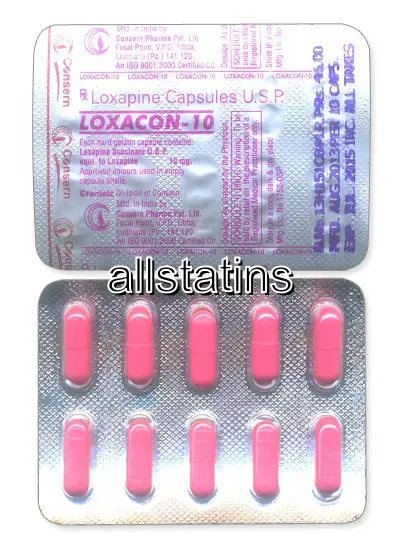| Package | Dosage | Price | Price per Dose | |
|---|---|---|---|---|
| Dosage: 10mg | ||||
| 360 pill | 10mg | $593.80 | $1.65 | |
| 180 pill | 10mg | $322.90 | $1.79 | |
| 120 pill | 10mg | $238.58 | $1.99 | |
| 90 pill | 10mg | $191.94 | $2.13 | |
| 60 pill | 10mg | $138.12 | $2.30 | |
| 30 pill | 10mg | $80.71 | $2.69 | |
| Dosage: 25mg | ||||
| 360 pill | 25mg | $846.75 | $2.35 | |
| 180 pill | 25mg | $475.39 | $2.64 | |
| 120 pill | 25mg | $358.78 | $3.00 | |
| 90 pill | 25mg | $292.40 | $3.25 | |
| 60 pill | 25mg | $213.47 | $3.55 | |
| 30 pill | 25mg | $125.56 | $4.18 | |

Loxitane Description
Understanding Loxitane: An Overview
Loxitane, known by its generic name loxapine, is an antipsychotic medication primarily prescribed to manage schizophrenia and acute agitation associated with psychotic disorders. It belongs to the class of typical or first-generation antipsychotics. In the United States, Loxitane is often used when other medications have not been effective enough or when quick symptom control is needed. It has a calming effect on the brain's chemicals, helping to reduce hallucinations, delusions, and confusion.
How Loxitane Works
This medication functions by blocking specific dopamine receptors in the brain. Dopamine is a neurotransmitter that influences mood, perception, and behavior. By inhibiting its overactivity, Loxitane helps restore a balance to brain chemicals, alleviating the symptoms of psychosis. Although effective, it is essential to be aware of potential side effects, which can range from mild to severe. The medication’s impact on the central nervous system requires careful monitoring, especially during initial treatment or dosage adjustments.
Proper Usage and Dosage
In the USA, Loxitane is available in various forms including tablets and injectable forms. The prescribed dose varies depending on the patient’s condition, age, and response to therapy. It is crucial to follow the healthcare provider’s instructions precisely. Generally, treatment begins with a low dose, gradually increased to minimize side effects. Patients should take the medication with food or milk to reduce gastrointestinal discomfort. Never change the dose or stop taking the medication without consulting your doctor first, as abrupt discontinuation can lead to relapse or withdrawal symptoms.
Potential Benefits and Patient Reviews
Many patients have reported positive outcomes with Loxitane, noting significant reduction in hallucinations and paranoid thoughts. It offers quick symptom relief, which can be particularly helpful during acute episodes. In the US, patients often appreciate its efficacy combined with a manageable side effect profile when used correctly. However, some users have expressed concerns about common side effects such as drowsiness, dry mouth, or weight gain. Overall, those who adhere to their treatment plan and communicate openly with their healthcare providers tend to experience better results.
Side Effects and Precautions
Like all medications, Loxitane can cause side effects. Common adverse effects include sedation, dizziness, constipation, and blurred vision. More serious risks involve extrapyramidal symptoms, such as tremors or muscle stiffness, and potential blood disorders. Patients with a history of heart problems or glaucoma should inform their doctor before starting this medication. Regular monitoring, including blood tests and cardiac assessments, is recommended to catch any adverse reactions early. Additionally, patients should be cautious about operating machinery or driving until they know how Loxitane affects them.
Usage in the United States and Regulations
In the USA, Loxitane is classified as a prescription drug, meaning it is only obtainable through a licensed healthcare provider. Online pharmacies that dispense Loxitane require a valid prescription. Patients should buy from reputable sources to ensure medication authenticity and safety. The medication's packaging and labeling are designed to meet strict regulatory standards. It’s important to verify that your healthcare provider has conducted a thorough assessment before prescribing Loxitane, especially considering its potential interactions with other medications or substances.